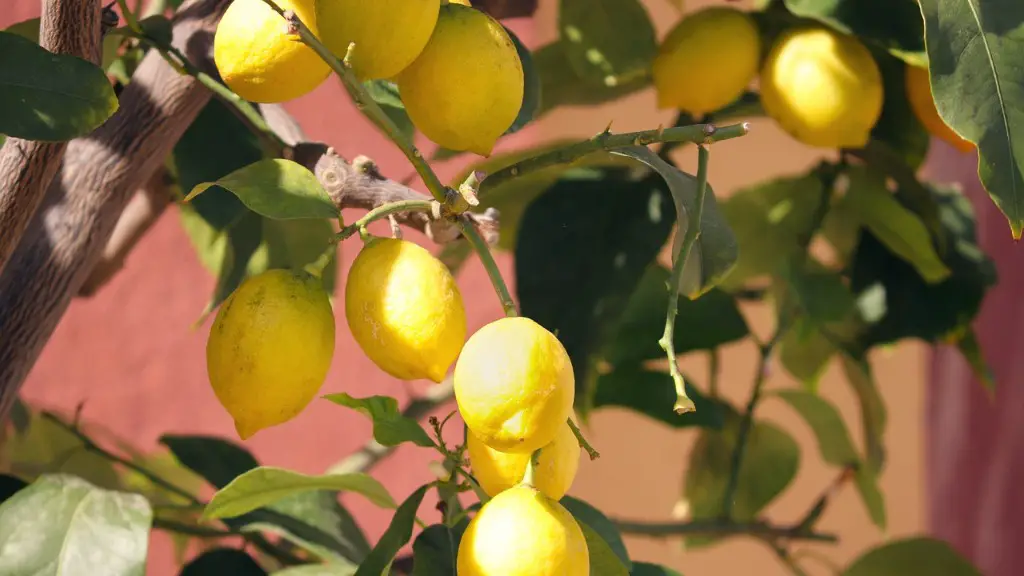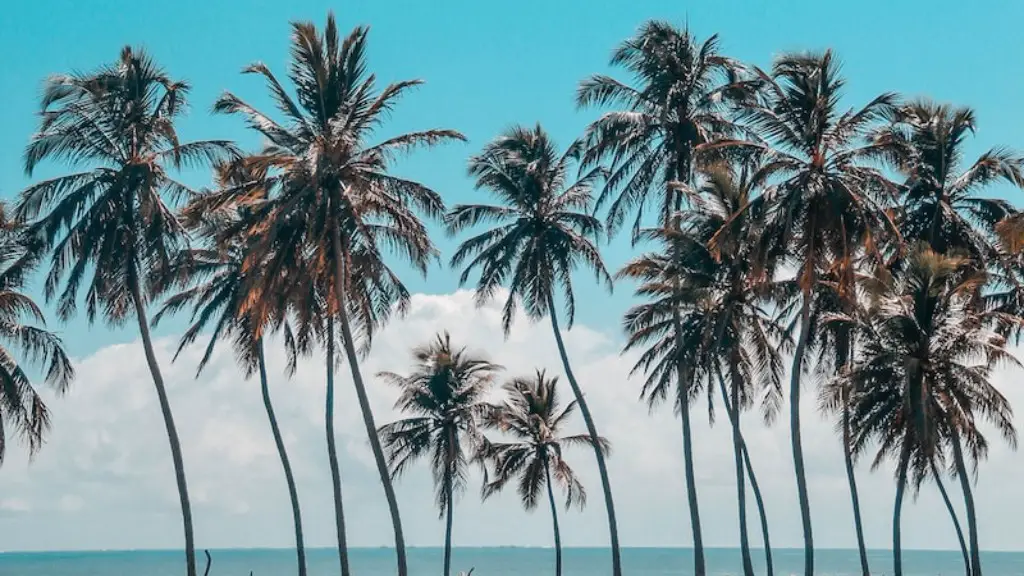Soil
Avocados are subtropical trees, meaning they need well-draining soil to thrive. Avocado trees need to have a minimum of 5.5 to 6.5 pH level of soil to grow. The best soil mix for avocado trees that is grown in a container is a mixture of regular garden soil, compost and other organic matter. All these mixes together will help the tree to grow strong in the container, providing necessary nutrients to the tree.
Container
The size of the container should be large enough to contain the entire root system of the tree, yet small enough so that you can move it around as needed. You can start with a 3- to 5-gallon planter and go up to 12-gallon planter, depending on the size of the tree and its root capacity. Avocado trees that are grown in containers tend to bear less fruit than those rooted in the ground, so plan accordingly when selecting the size of the pot.
Light
Avocado trees grown in a container need a lot of bright light to produce copious fruit. Avocado fruits require full sun for at least eight hours a day for optimal growth and development. Make sure the container of the tree is in an area where it will receive plenty of direct sunlight.
Water
Avocado trees prefer deep, but not too frequent, watering. Overwatering can damage the roots and prevent the tree from developing a full root system. Aim to water your tree deeply once every week to 10 days, depending on the size of the container and amount of sunlight it receives. Be sure to water until the soil is moist all the way to the bottom of the container.
Fertilizer
Avocado trees should be fertilized at least twice a year with a balanced fertilizer like 10-10-10. Apply the fertilizer according to package instructions, as different sizes of containers require different amounts of fertilizer. It is important to note that avocado trees grown in containers need less fertilizer than those grown in the ground.
Winter Care
When winter arrives, the tree should be moved indoors, preferably to a spot that has good ventilation and indirect sunlight. The tree will thrive in temperatures between 55 to 65 degrees Fahrenheit. During winter, you’ll also need to adjust the watering pattern. Choose to water only every two to three weeks, as the soil may freeze if watered frequently.
Pruning
Avocado trees grown in containers need periodic pruning to keep them healthy and productive. Prune out any dead branches, limbs and leaves, and remove any branches that might be crowding the tree. Pruning should be done in early autumn so that the tree has time to recover before winter sets in.
Diseases and Insects
Avocado trees grown in containers can be prone to root rot and insect infestations. It is important to inspect the tree regularly and look for any signs of diseases or insects. Common pests include thrips, scale insects, and mites. If a pest infestation is suspected, treating the tree with an insecticidal soap or neem oil should be done immediately.
Re-Potting and Repositioning
When planting an avocado tree in a container, it is important to re-pot it once in a while. Re-potting should be done every few years to ensure that the roots have enough room to grow, and the soil has enough nutrition to help the tree thrive. You may also need to periodically reposition the container to get the right amount of sunlight.
Propagation
Avocado trees can be propagated by planting the pit of the avocado fruit. To do so, first wash the pit of any remaining fruit and place it in a bowl of water. Over the next few days, the pit will start to sprout. Once it has a few sprouts, it can be planted directly into the soil in its container.
Harvesting
Avocado trees grown in containers will generally take longer to bear fruit than those grown in the ground. Fruits can take anywhere from 3 to 7 years to appear, depending on the size of the tree and the climate. Fruits are generally ready for harvest when they fall from the branch. Fruits should be carefully hand-picked, as they can be easily damaged from being plucked off the branch.
Zone Compatibility
Avocado trees are native to tropical and subtropical climates, and do not like extended cold weather. It is important to research the climate of your region and find an avocado tree that is compatible with it. For example, some avocado trees can withstand temperatures as low as 20-25 degrees, while others can handle temperatures down to 10-15 degrees Fahrenheit.
Soil Quality
It is important to use a good quality soil when planting an avocado tree in a container. The soil should be a mix of regular garden soil, compost and other organic matter, as mentioned earlier. This mixture will provide the necessary nutrients for the tree to grow and thrive. Additionally, the soil must be well-drained to prevent root rot.
Temperature Considerations
Avocado trees prefer warm temperatures of about 65 to 70 degrees Fahrenheit, and do not like cold temperatures. This means that the container housing the tree must be kept indoors during winter to protect it from freezing temperatures. During summer, it is best to move the container outdoors for the tree to receive direct sunlight.
Pest Control
Avocado trees grown in a container may be prone to pests infestations. The best way to detect pests is to inspect the tree regularly and look for signs of pests. If a pest problem is detected, it is important to take immediate action and treat the tree with an insecticidal soap or neem oil.
Dormant Period
Avocado trees need a dormant period of about three months in the winter to set fruit. During this time, it is important to reduce water and fertilizer to avoid any harm to the tree. During this time, the tree should be kept in a cool spot indoors, out of direct sunlight.
Root Deformations
Root deformations can be a problem in trees planted in containers due to the limited growth space. To avoid this problem, it is important to make sure that the pot you choose is large enough for the root system to grow. Additionally, it is important to re-pot the tree at least once every few years to give the roots enough space to grow.



